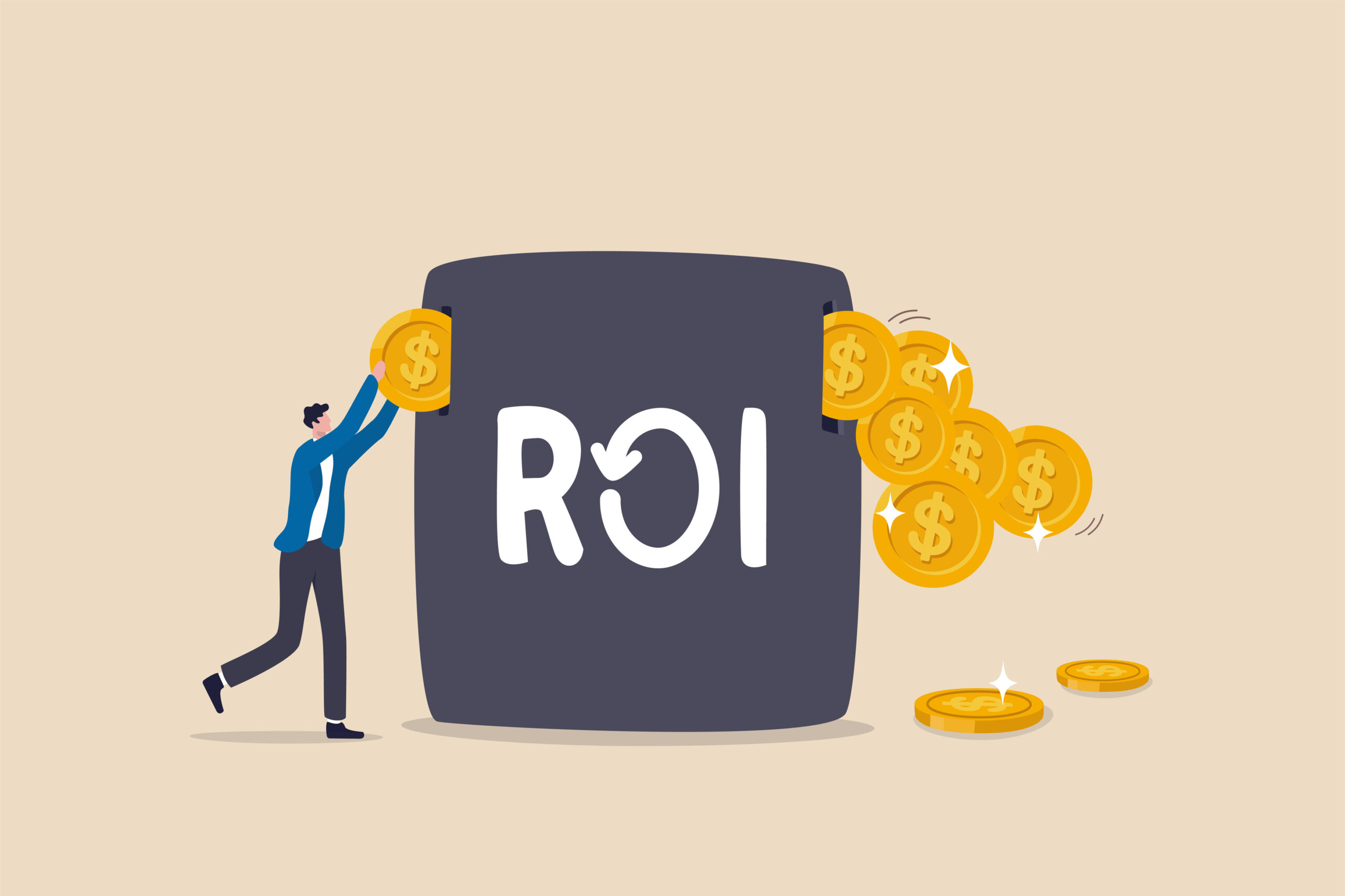Exploring Direct Mail ROI: Facts and Figures
By Paul Bobnak | February 16, 2024

Direct Mail Marketing’s ROI Revolution
Direct mail ROI is all about numbers – what you spend on your campaign versus what you get back in purchases (or, for non-profits, donations). And numbers don’t lie. You may have carefully planned every detail, and feel really good about the design or printing techniques you used, your clever copy and headlines, or the specific audiences you targeted. But ultimately, your mail piece’s success or failure depends on how well it performs after it arrives in the mailboxes of consumers.
Understanding Direct Mail ROI
In this post, we’re going to look at the complex factors that go into direct mail ROI. It is important to understand how to maximize the effectiveness of your direct mail campaigns and make informed decisions based on your return on investment.
Defining Direct Mail ROI: Metrics and Components
There are a lot of figures you should be on top of to calculate your direct mail ROI, such as:
Campaign Costs – Add up the expenses for your campaign, such as creative (writing and design), printing, postage, marketing, programming, and list rentals. This gives you a good starting point.
Cost Per Piece – Divide your campaign costs by the total amount of pieces mailed. Depending on the complexity of the mail piece, the type of paper it’s printed on, the audience, the USPS mail class, and many other factors, your results can vary widely.
Response Rate – Divide the total count of responses by the number of pieces mailed, then multiply by 100. This figure, though, can be misleading, as it doesn’t always indicate if a mailing succeeds or fails.
Conversion Rate – Divide the number of sales by the total number of responses, then multiply by 100. Here again, the amount of sales may not necessarily be the best way to measure your success. The quality of the sales achieved may be more important to other important overall goals, such as making your brand more visible or increasing the number of leads or customers in your CRM system.
Return on Investment (ROI) – Subtract revenue generated by the mail piece from the campaign costs, then divide by the campaign costs. Next, multiply that result by 100 to get the ROI figure.
The Significance of Measuring ROI in Direct Mail Marketing
Knowing your ROI helps you quantify the value of your direct marketing campaign. Back when you set your strategy, you formulated a budget that balanced your goals with your resources. With concrete numbers at the end of a campaign, you can make informed decisions about making adjustments to mailing the same campaign again as well as for helping to plan future campaigns. Looking at direct mail ROI also helps you decide how to allocate your marketing budget more effectively.
One final point is that with your ROI figure, you can still look at other campaign metrics and decide if some of those are important enough to justify a low or disappointing ROI. For example, spending more to acquire more customers may be worth the short-term impact on our ROI if it helps build long-term value.
Evidence Highlights Higher ROI in Direct Mail Marketing Than in Digital Channels
Marketers today deal with a lot of challenges, but maybe one of the biggest is proving to colleagues or clients that an investment in direct mail is worthwhile. Direct mail spending could be a tough sell when stakeholders may be much more familiar with digital marketing. Including mail in your marketing plan counters myths and misinformation when it’s based on the right direct mail statistics.
Here are some direct mail statistics and findings from studies that make the case for this channel’s effectiveness in getting attention and driving good-to-great mail marketing ROI.
84% of marketers say direct mail delivers the best response rate, conversion, and ROI.
The Lob State of Direct Mail Report 2024 noted that this statistic was up from 74% in 2023, and 67% in 2022.
75% of marketers who use an automated direct mail platform can accurately measure the ROI of their campaigns.
The Lob survey also shows that 56% of marketers are able to determine the ROI of their direct marketing campaigns by measuring PURLs, and 55% by customer activity.
69% of marketers report response rates of greater than 3%.
According to SG360’s Future of Direct Mail 2023 survey: 11% say they have greater than 7% response rates.
Direct mail has a 9% response rate (for house lists), and 5% for prospect lists.
Those are higher response rates than for digital channels, notes the most recent ANA Response Report. Customers and donors like and trust direct mail compared to email or other messages that get lost in the clutter. Both figures have trended up in the last several years, mostly likely due to better target audience data.
Key Factors Influencing Direct Mail ROI
There are many factors that can affect the total cost of your direct mail campaigns. To achieve your marketing goals, you must balance the cost and benefits of every single variable (non-fixed) expense under your control. Your strategy should include careful research and testing to determine the best course.
Targeted Audience Segmentation
Your data is absolutely critical to your campaign’s overall success and your direct mail ROI. Let’s assume that you’ve made the right investments to ensure that your data is complete and up-to-date. Your next task is to decide which specific audience segments should be your priority based on the RFM model. Your best customers have bought the most recently, buy most frequently, and spent the most money. Other segmentations include demographics like age, gender, income level, and more.
Creative Design and Personalization
Because direct mail attracts attention, color, paper choice, variable data personalization (VDP), and format are all ways to make it stand out. However, some options may be less affordable than others. Optimizing costs by switching to smaller, standard, generic designs and formats may provide better ROI.
Timing and Frequency of Mail Campaigns
Timing can be a big factor in direct mail ROI. This is why it’s important to analyze buying patterns of customers in your database and find the best cadence to send your campaigns. Also, consider the competition in your target audience’s mailbox and inbox when planning your mail.
Tools and Technologies for Tracking Direct Mail ROI
In a survey conducted by Ascend2 and Allegra Marketing in 2023, 34% of SMB marketers cited difficulty in tracking and measuring ROI as a challenge for using direct mail as part of their strategy.
To know if and how your campaign is working, you need to attribute where the response came from. Whether you have a single touchpoint or multiple points, your tracking data will need to distinguish which one should be credited for the conversion.
The most common ways to attribute response include:
URLs – Promotional URLs, PURLs, and Google URL Builder all provide different levels of tracking consumer behavior online
Matchback – Cross-references mail campaign recipient data with purchase data for a specific period of time
Phone – Call tracking software matches numbers called to a customer sale or lead
Mail-In – Oldest response tracker quantified by a barcode as well as an offer code
In-Person – Point-of-sale response tracked by a scan of a mail piece, offer code, or matchback data
Maximizing Direct Mail ROI: Best Practices
Besides finding the right balance of factors, there are other ways to get the best return on spend, such as:
Creating actionable content – Educating customers builds trust and confidence in your brand
Integrating direct mail with other channels – Coordinating customer touchpoints across channels gives your brand visibility and consistency
Automating direct mail campaigns – An always-on retargeting strategy leverages both online and offline data to reach customers and move them along the sales funnel more quickly
Wrapping it up
At mailing.com, our data management and mailing services teams have decades of expertise in focusing on all of the factors that go into creating direct mail that delivers great ROI. Call or contact us – we’d love to help you put together a complete and cost-effective direct mail campaign to accomplish your goals quickly.


